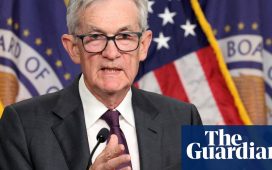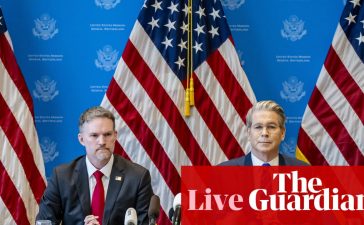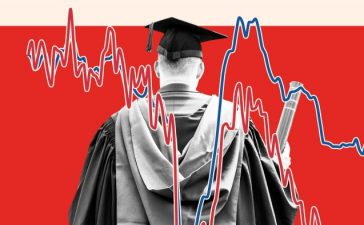Stay informed with free updates
Simply sign up to the US employment myFT Digest — delivered directly to your inbox.
The US added 336,000 new jobs in September, far more than expected, pushing bond yields to a new 16-year high and fuelling investors’ anxieties that interest rates will stay higher for longer.
The Bureau of Labor Statistics data, which easily surpassed expectations of 170,000 new jobs, reignited the bonds sell-off that has swept global markets over the past two weeks.
Ten-year US government borrowing costs reached their highest point since 2007 after the publication of the 336,000 figure, which was also far more than August’s upwardly revised total of 227,000.
Bonds partially recovered after their initial sell-off but yields remained close to the highest levels in more than a decade, reflecting market expectations that the US Federal Reserve will keep interest rates high over an extended period.
Wylie Tollette, chief investment officer at Franklin Templeton Investment Solutions, said the “blowout jobs figures” were “clearly hotter than expected”.
He added: “My expectation and it looks like the market’s belief is that this increases the odds of a rate increase by the Fed.”
But President Joe Biden feted the figures, highlighting that the unemployment rate had remained below 4 per cent for the longest stretch for 50 years, while inflation was now “the lowest . . . of any major economy in the world”.
He added: “It’s no accident. We are growing the economy from the middle out, the bottom up.”
Biden also urged lawmakers to “get to work” to reach an agreement to keep the government funded after a shutdown was narrowly avoided last month, or risk jeopardising recent job gains.
In the minutes after Friday’s report, the yield on the policy-sensitive two-year Treasury note jumped almost 0.13 percentage points to 5.15 per cent. After trimming some of those gains, it was still trading up 0.05 percentage points on the day at 5.07 per cent in late afternoon trading in New York.
The 10-year yield added 0.17 percentage points to reach almost 4.89 per cent, while the 30-year yield topped 5.05 per cent for the first time since August 2007, although both fell back.
The S&P 500 reversed its initial decline and rallied through the session to be more than 1.5 per cent higher in late afternoon trading in New York. The Nasdaq Composite climbed 1.8 per cent.
Friday’s report provides the Fed with an important data point as the central bank decides whether its mission to quell inflation is succeeding — or whether rates, already at a 22-year high, need to rise further. The Fed meets again at the end of the month.
Futures markets on Friday were pricing in a 50 per cent chance of the Fed raising interest rates once more by the end of the year, up from 40 per cent before the jobs data.
Ajay Rajadhyaksha, head of rates at Barclays, suggested that the Fed would have to increase rates further unless consumer price data next week showed inflation pressure relenting.
“The Fed will have to go, I think, unless CPI is extraordinarily weak,” he said, adding that unless the jobs figure was low it would be difficult for the bond market “to find a footing”, given “how much we have sold off already”.
In an indication that the labour market remained strong during the final summer months, July’s figure was also revised higher by 79,000 to 236,000.
But PGIM Fixed Income chief global economist Daleep Singh expressed doubts that Friday’s jobs figures would force “the Fed into a more hawkish posture”, arguing that the bond yield surge was a “substitute” for a Fed reason to increase benchmark rates.
He added that there was “plenty of evidence that the labour market is rebalancing and inflation is cooling”.
The BLS data showed the unemployment rate at 3.8 per cent, in line with August’s figure and slightly above expectations of 3.7 per cent.
Average hourly wages rose 0.2 per cent month on month, matching the increase reported in August but coming in below expectations of 0.3 per cent growth — figures that Thomas Simons at Jefferies said showed the details of Friday’s report were “not as robust” as the headline payroll growth.
On an annual basis, wages rose 4.2 per cent, compared with 4.3 per cent in the prior period.
The Fed held interest rates at 5.25-5.5 per cent at its most recent meeting on September 20. But most of the central bank’s officials expect one more increase in 2023 and a slower pace of cuts over the next two years, according to data from the Fed.
Many officials have stressed that the Fed can afford to be “patient” after raising interest rates several times over the past 18 months.










